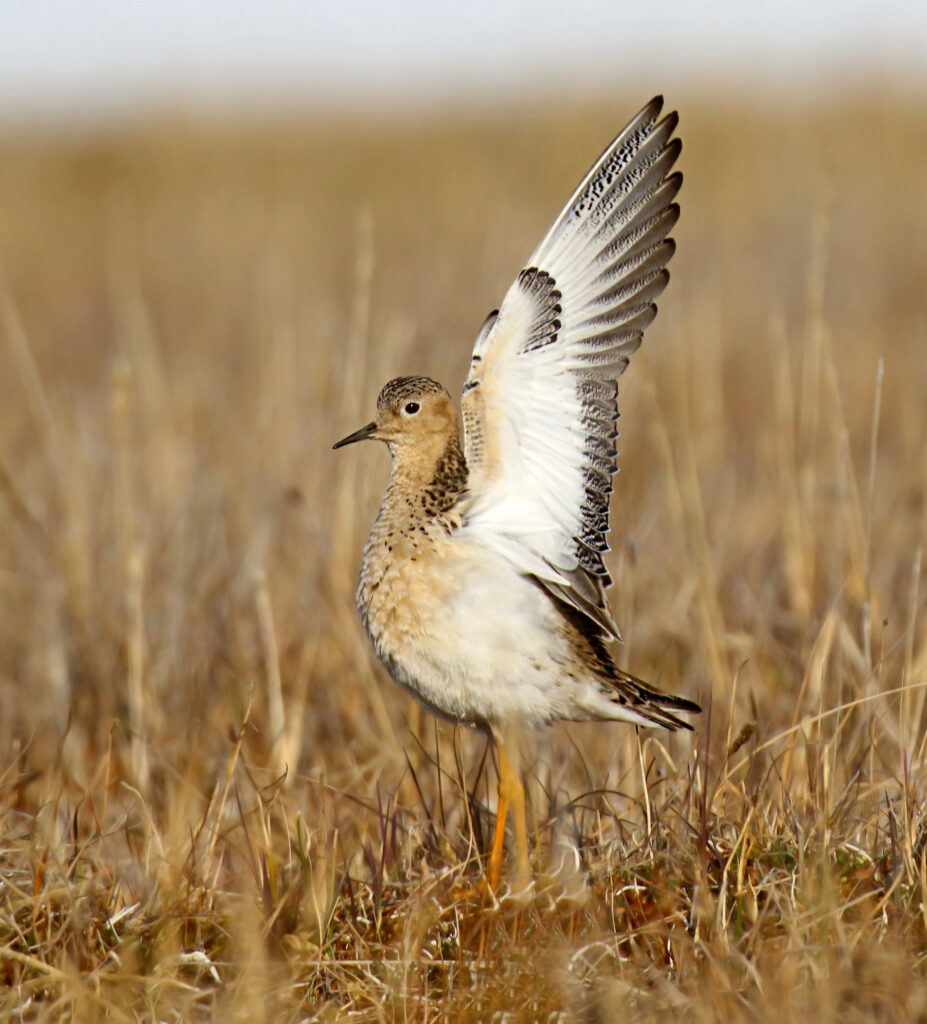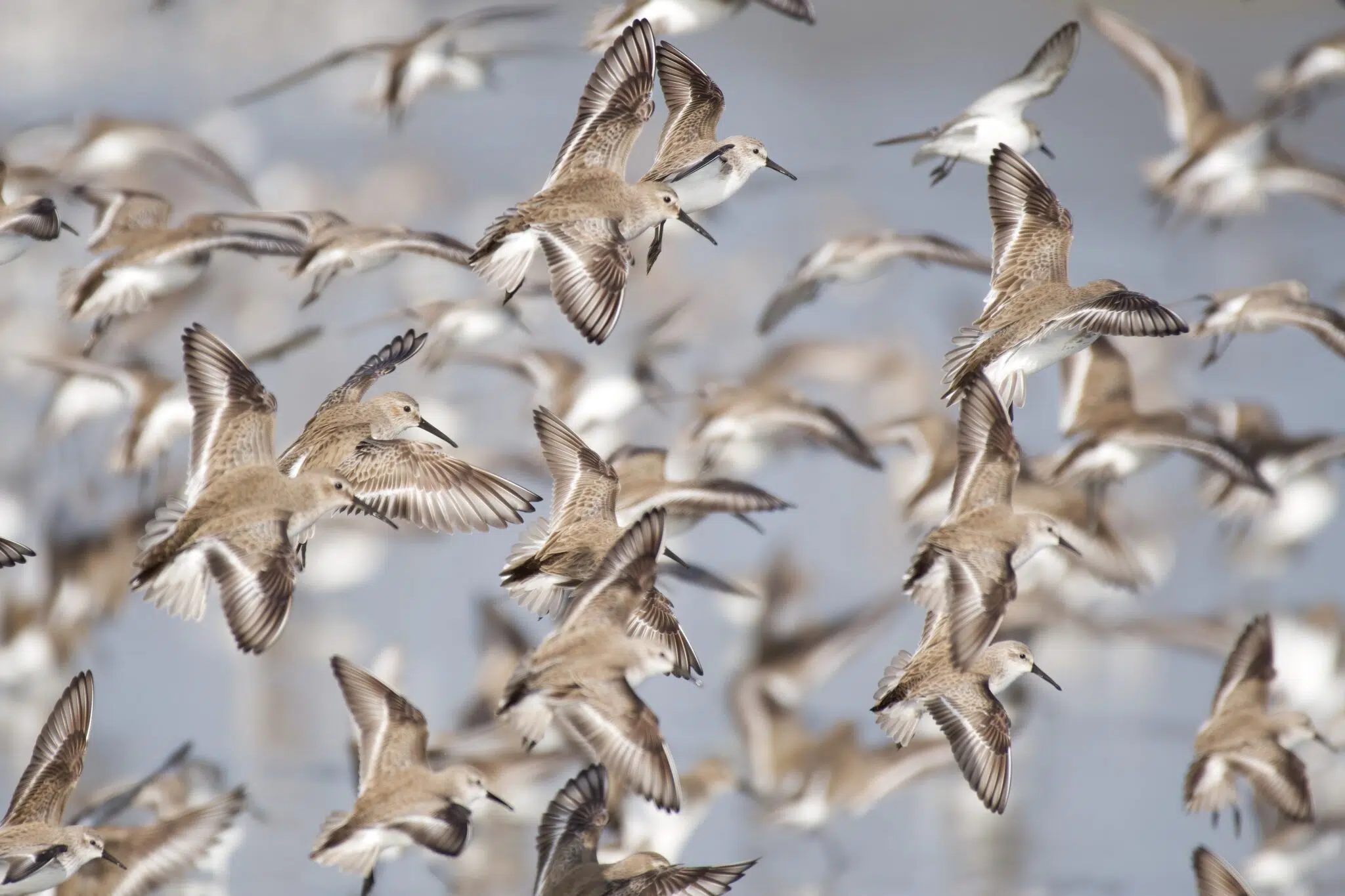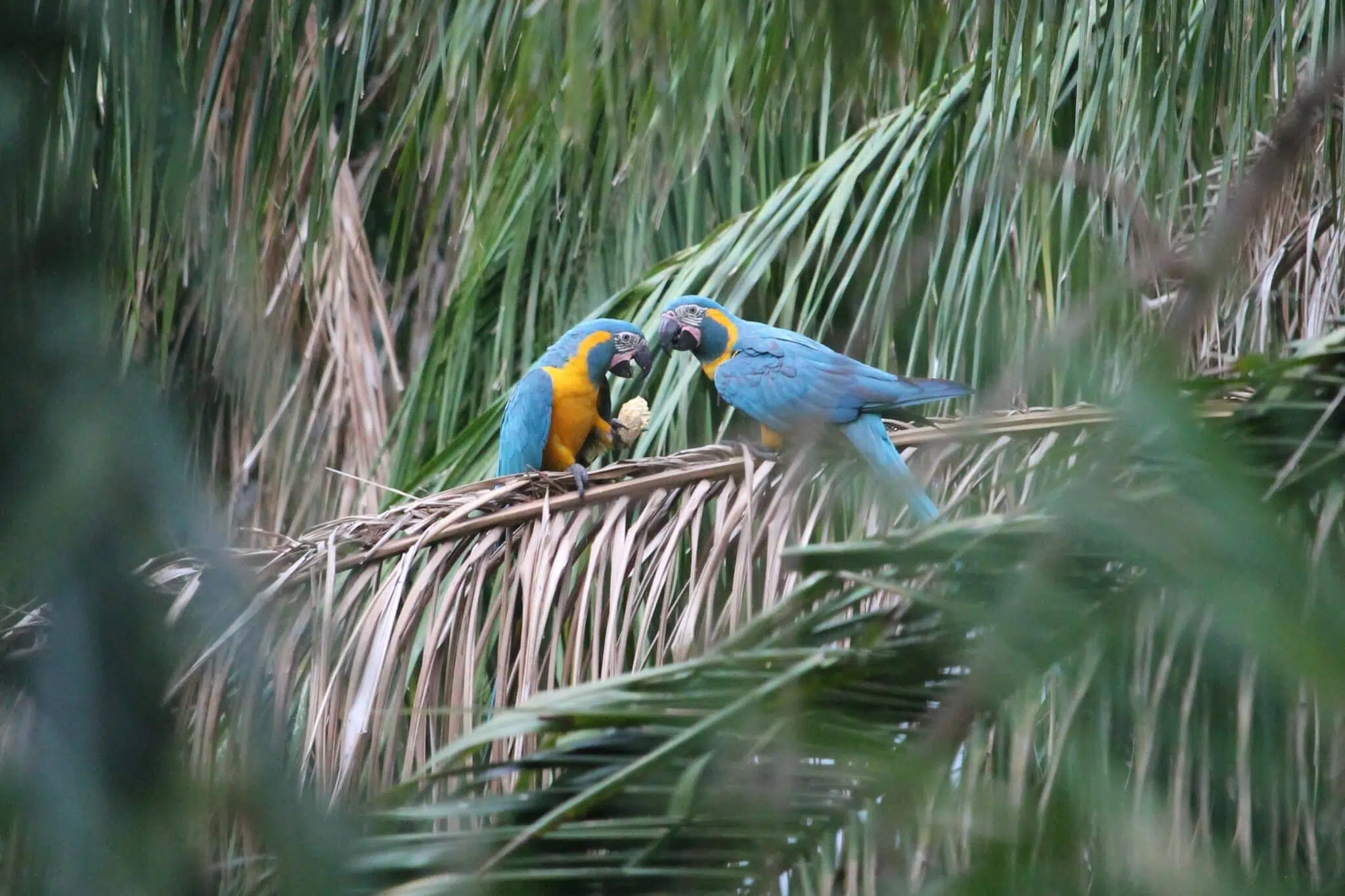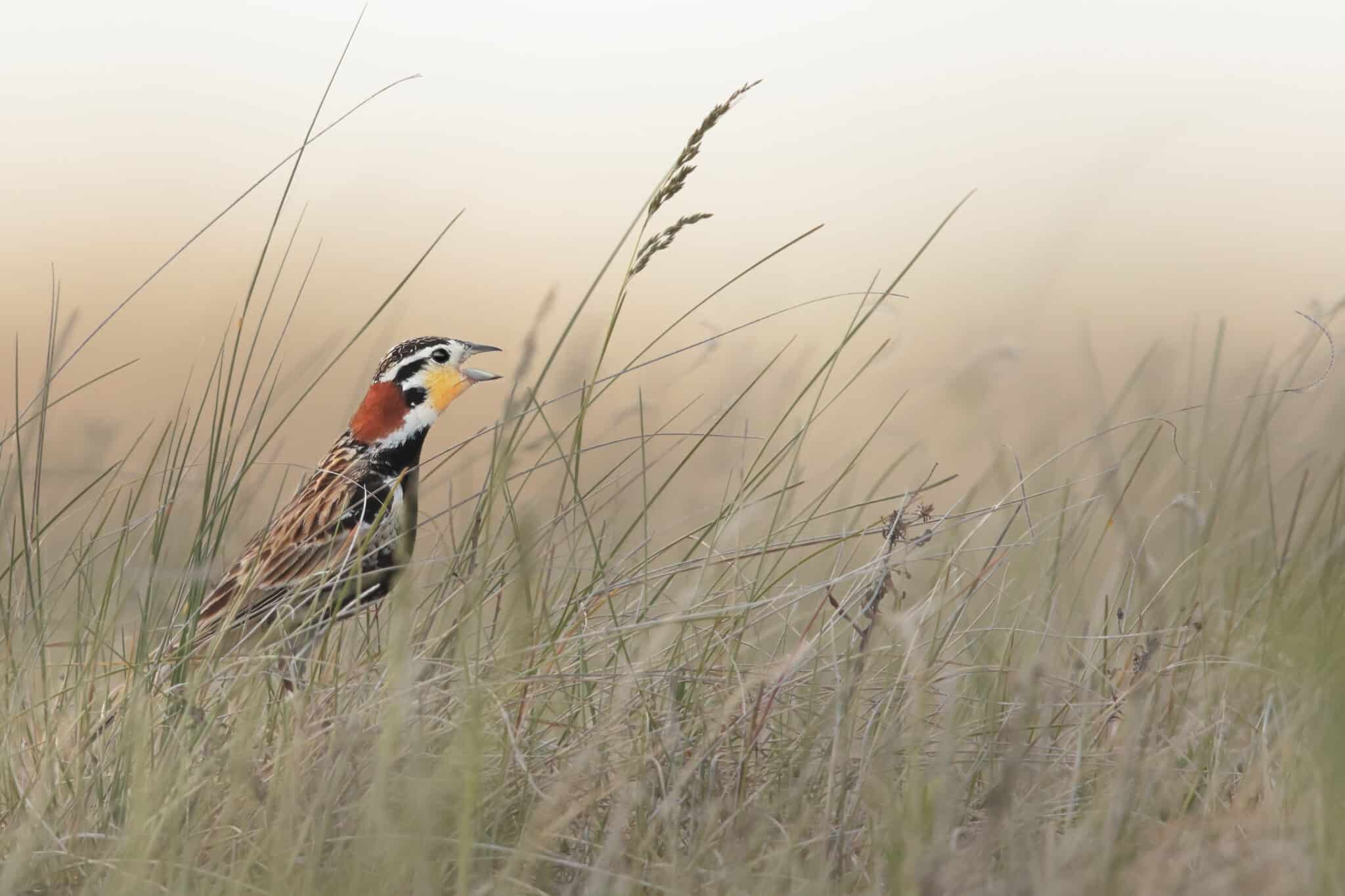Right of Passage: Help us save the Buff-breasted Sandpiper
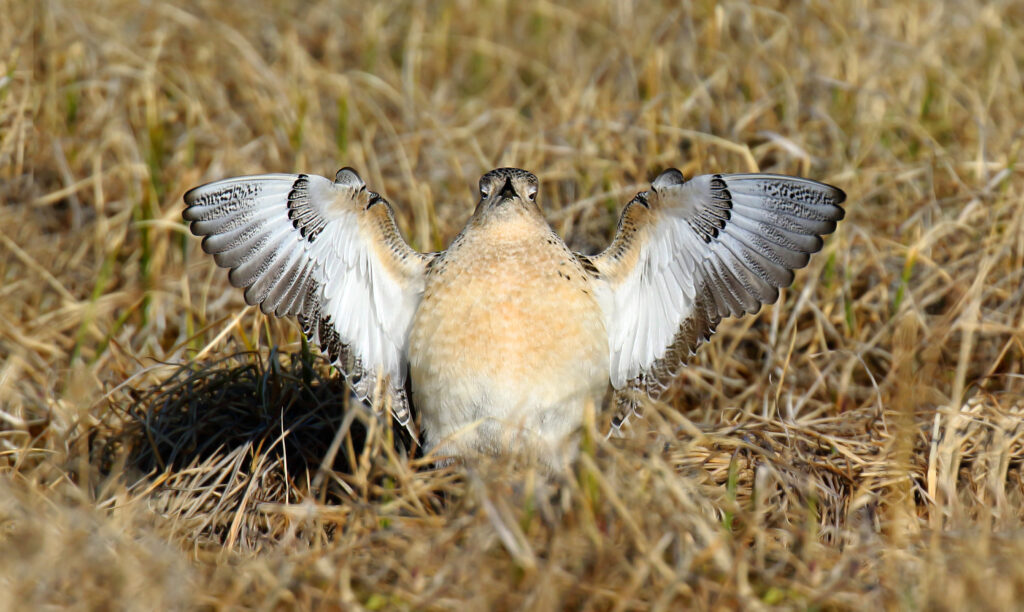
Unique among shorebirds, the prairie-loving, pampas-wintering Buff-breasted Sandpiper links habitats from the Arctic to southern South America through its epic migration. Its future is uncertain, however, with historical hunting and destruction of grasslands driving steep declines. Help us fight for flyways and protect this enigmatic sandpiper along with the millions of other birds that migrate along them.
By John Fanshawe
Header image: One of only three lekking shorebird species, male Buff-breasted Sanpipers strike spectacular poses to attract mates © Agami Photo Agency/Shutterstock
A seriema calls. It is first light: the bird’s giddy yelping welcomes a thin austral sun. Nearby, cattle graze and a pair of Southern Lapwings take to the air, calling indignantly. For many in Latin America, their cries yield onomatopoeic names, such as tetéu in Guarani, or tregûl in Mapuche, and they are seen as benevolent, vigilant sentinels. In his Multi-Ethnic Bird Guide, Ricardo Rossi writes how plovers are “meticulous cleaners” of the pasture, birds whose pecking “allows the soil to breathe”; a sense, perhaps, of how inter-generational observations of these bird communities create a feeling of custodianship that has invariably fallen prey to our insatiable hunger for land.
Surrounded by the swish of cow-tails, these characterful birds share their space during the southern summer with a temporary resident, Buff-breasted Sandpiper – a long-distance traveller that bears Arctic air deep in its lungs. Named chululu’i sa’yju in Guarani, a combination of the generic name for sandpiper, chululu, a diminutive, ’i, and the colour yellow, or sa’yju, it is the ‘little yellow sandpiper’.
Small for sure, barely a bird ringer’s handful, but these speckled buffish ‘shorebirds’ of the grasslands move up and down the Mid-continental Americas Flyway on a mammoth biannual migration that belies their stature.
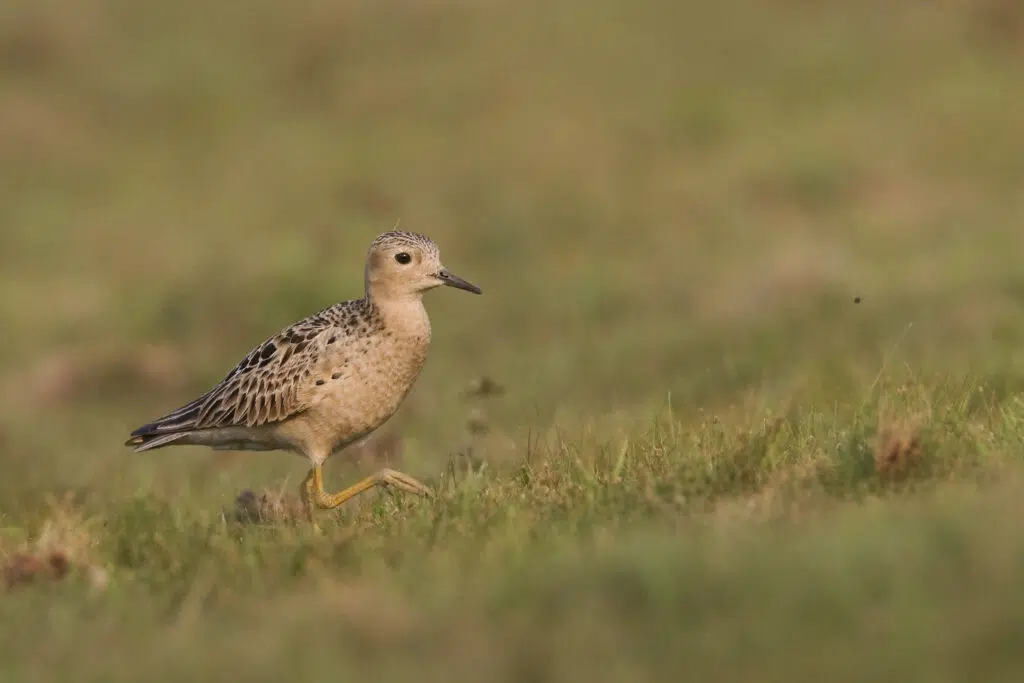
Emblematic migrant
Buffies’, as they are sometimes affectionately known, are one of the flagship birds for the Americas Flyways Initiative (AFI), a vital collaboration between BirdLife International, the National Audubon Society (BirdLife in the US) and CAF (the Development Bank of Latin America). This ambitious, hemispheric effort aims to fuse community and nature-based solutions to tackle the threats that biodiversity loss and climate change present to birds dependent on key sites from Alaska and the Canadian Arctic to the tip of Argentina and Chile – to create, as Elizabeth Gray, Chief Executive Officer of the National Audubon Society, has remarked, a “paradigm shift, full of new collaborations that tackle the crisis at scale, and with genuine impact on the ground”.
The AFI will draw on experience gained from the East Asian-Australasian Flyway, where BirdLife is working alongside the Asian Development Bank (ADB) to transform conservation funding. ADB’s Xiaohong Yangs, who has worked extensively on transport systems, has stressed connectivity and how innovative collaborations are starting to integrate nature into development bank operations and investment. Connectivity is the key word, reflecting the links and needs of human communities and migratory birds across global flyways.
In his fascinating study Bird Sense, Tim Birkhead wrote how, as long ago as the early 1700s, “casual observers of caged songbirds like the nightingale noted how their birds begin an agitated hopping each autumn and spring when they would normally be migrating”. A word in German, Zugunruhe, meaning migratory restlessness, was compounded to describe this inner clock, or urge to move. It seems an apt metaphor for our own desire to tackle the challenges faced by this dynamic but threatened migratory shorebird.
In their winter quarters, Buff-breasted Sandpipers are spread out across a sizeable area of South America, with notable sites including Bahía Samborombón Reserve in northern Argentina, Laguna de Rocha in Uruguay and Lagoa do Peixe National Park in southern Brazil. In mid-April, that itch to return north and breed is overwhelming. Restlessness sets in, and the sandpipers stream north, reaching the Arctic at the end of May.
Use of geolocators, as well as data gathered by networks of professional and volunteer observers, has unpicked the routes they take and helped identify the places they need to survive. With a round trip of more than 30,000km, Buff-breasted Sandpiper is one of the longest-distance migrants in the Americas – a single male has been recorded travelling 41,000km. As lines on maps, telemetry tracks feel as precarious as the travels they represent, revealing staging and refuelling grounds as well as breeding and non-breeding sites that demand complex and inter-related mosaics of conservation action.
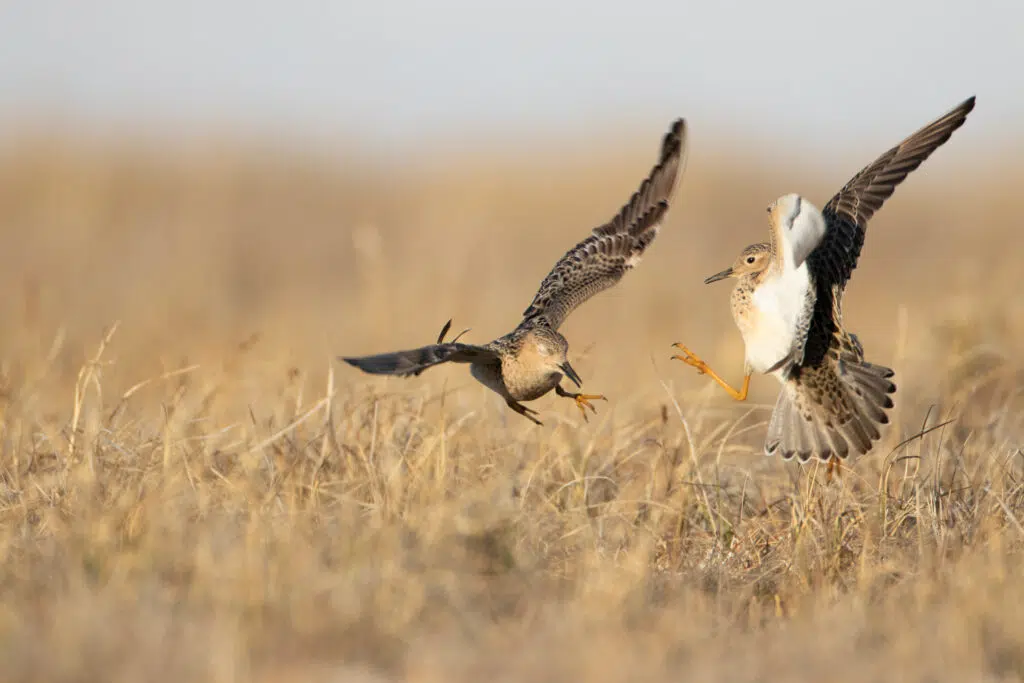
Global Challenge
Across all nine major flyways worldwide, such places sustain birds that since time immemorial have heralded seasonal change. Journeys long and short; cranes, geese, ducks, raptors aplenty, cuckoos, thrushes, warblers and other migratory species, restlessly criss-crossing continents, embedding their lives deeply in human cultures. BirdLife partners have long recognised the transboundary nature of the challenge, and the power of collaborating under an umbrella of shared concern. The AFI demonstrates the power – and absolute necessity – of working across national boundaries.
With an Americas partnership covering the northern breeding grounds (Nature Canada, Bird Studies Canada, National Audubon and American Bird Conservancy) and southern non-breeding quarters (SAVE Brazil, Aves Argentinas and Aves Uruguay), as well as major staging sites (US partners along with Asociación Armonía in Bolivia and Guyra Paraguay), BirdLife is well positioned to address flyways conservation.
The partnership embraces a suite of government, non-government and other institutional frameworks. Many have, for example, worked together within the WHSRN (Western Hemisphere Shorebird Reserve Network), which is hosted by Manomet in Massachusetts. With the support of CAF, an opportunity exists to develop these networks and mobilise new finance for flyways conservation.
Buff-breasted Sandpiper is listed as Near Threatened by the IUCN. Historically, hundreds of thousands, perhaps even millions, may have migrated south, but numbers are now much lower, estimated at somewhere between 23,000–84,000 individuals, equating to 15,300–56,000 mature birds.
Major declines were driven by commercial hunting in the late 1800s and early 1900s, particularly during migration through the central US, but it is habitat loss that has continued to threaten populations, with the conversion of shortgrass prairies and pampas to agriculture and human settlement. Drilling for oil and gas in the Arctic has also had an impact on breeding success, and climate change is an increasingly hostile factor.
When they leave their breeding sites in the Arctic, mainly in late July and August, Buff-breasted Sandpipers start a journey that will end in the autumn, typically between mid September and December, and it includes a succession of staging posts in both directions. Southbound, crucial areas include the Flint Hills on the Kansas and Oklahoma border, where management supported by The Nature Conservancy (TNC) sees a progressive mix of patch burning and rotational grazing to ensure ideal foraging conditions.
Tallgrass prairie is one of the most altered ecosystems in North America, and less than 4% remains. Robert Penner, who leads TNC’s conservation action, contends that it is possible that “almost the entire population of Buff-breasted Sandpiper comes right through the Flint Hills each year”.
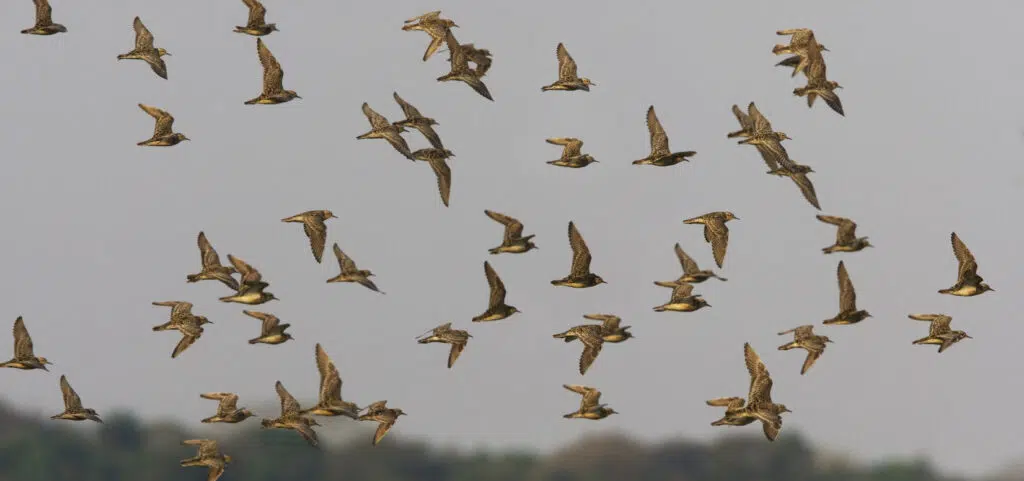
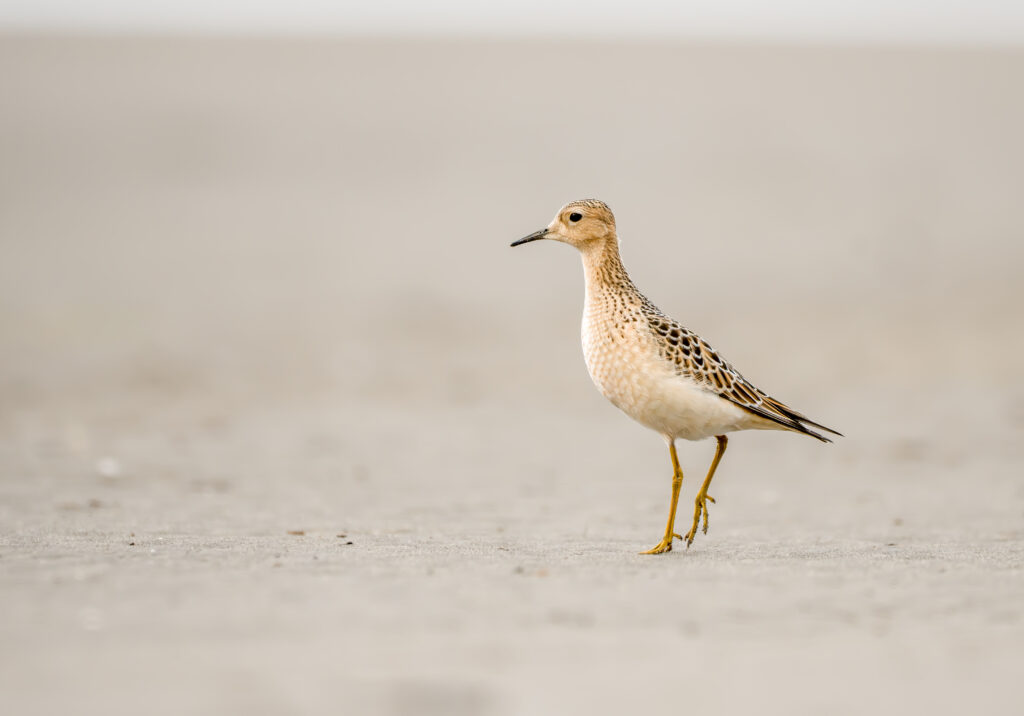
Glimmer of hope
In the Southern Cone Grasslands of South America, BirdLife Americas and its Partners Aves Argentinas, SAVE Brazil, Guyra Paraguay, and Aves Uruguay developed the Grasslands Alliance (Alianza del Pastizal) 16 years ago. Thanks to this regional initiative, more than one million hectares are under a sustainable production-conservation model that generates nature-friendly livelihoods for local communities while settling a vital refugee for around 204 bird species. The Buff-breasted Sandpiper is a focal species of the Alianza work that is being protected with other threatened resident and migratory birds along Americas´ Flyways.
After leaving the US, one of the main staging sites is the Barba Azul Nature Reserve, an area owned and managed by BirdLife´s Partner in Bolivia, Asociación Armonía. As its conservation lead, Tjalle Boorsma says that although the 11k ha reserve was established in 2008 to protect the Critically Endangered and endemic Blue-throated Macaw, it has become a haven for long-distance migratory birds including Buff-breasted Sandpiper.
The organisation has been managing the reserve’s shortgrass plains with this species in mind, and in 2022 there was a record count of 3,871 Buff-breasts at Barba Azul, suggesting that the tactical use of controlled burning and well- managed, low-intensity cattle grazing are providing ideal habitat. Shared management approaches in the US and Bolivia, and approaches that can be scaled up as new resources come on stream, as well as new conservation areas in private and public hands, are emerging.
When Buff-breasted Sandpipers arrive in the Arctic in May, their focus is on nesting. Unusually, they lek, with a system that is both communal and more solitary, with the majority of males holding and displaying from large territories in fairly close proximity, or adopting a more isolationist approach. Flashing their silvery underwings, lekking birds make for an unforgettable and unique spectacle.
Incubation of a typical clutch of four eggs is undertaken by the female alone, and the precocial chicks leave the nest at once, with young birds often departing the breeding grounds some days, even weeks, after their parents. Although range maps for the species are well defined, a glance at records on the eBird platform reveals that this long-distance migrant (particularly young birds) has an inordinate fondness for wandering. The species has occurred as a vagrant in more than 50 countries as far afield as Japan, New Zealand and Saudi Arabia.
One Nunavut name for Buff-breasted Sandpiper is Aklaktak, and in Iceland, Grastíta, but whether Buffy, or chululu’i sa’yju, for most of us it is impossible to imagine a world devoid of these restless travellers, and all they represent in terms of their and our connections, journeys made, and the natural and cultural exchange they represent along the Americas flyways.
